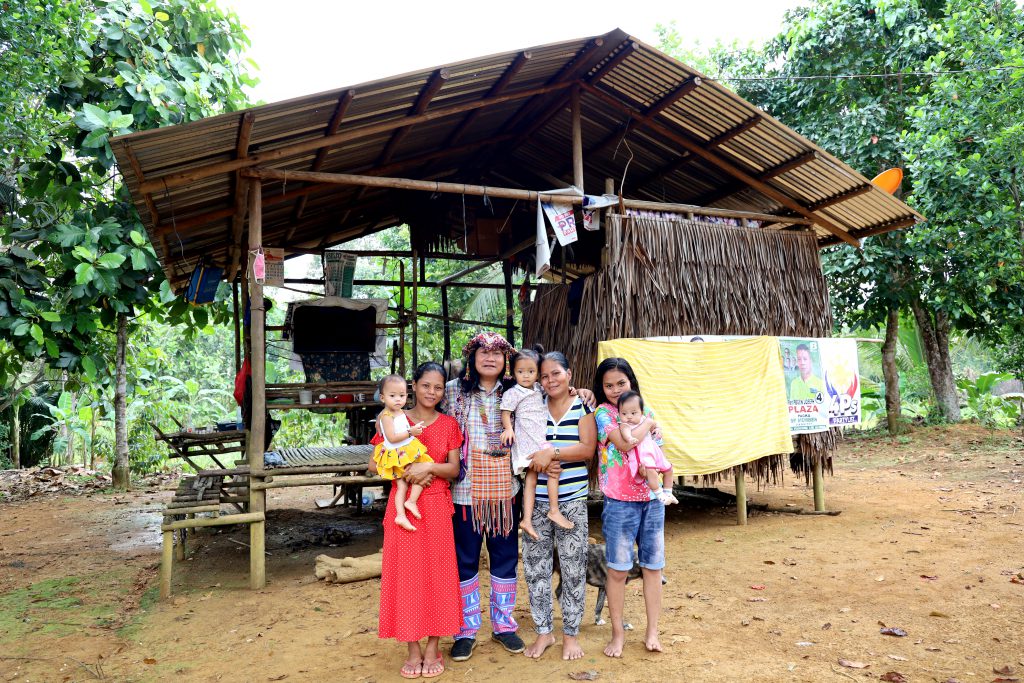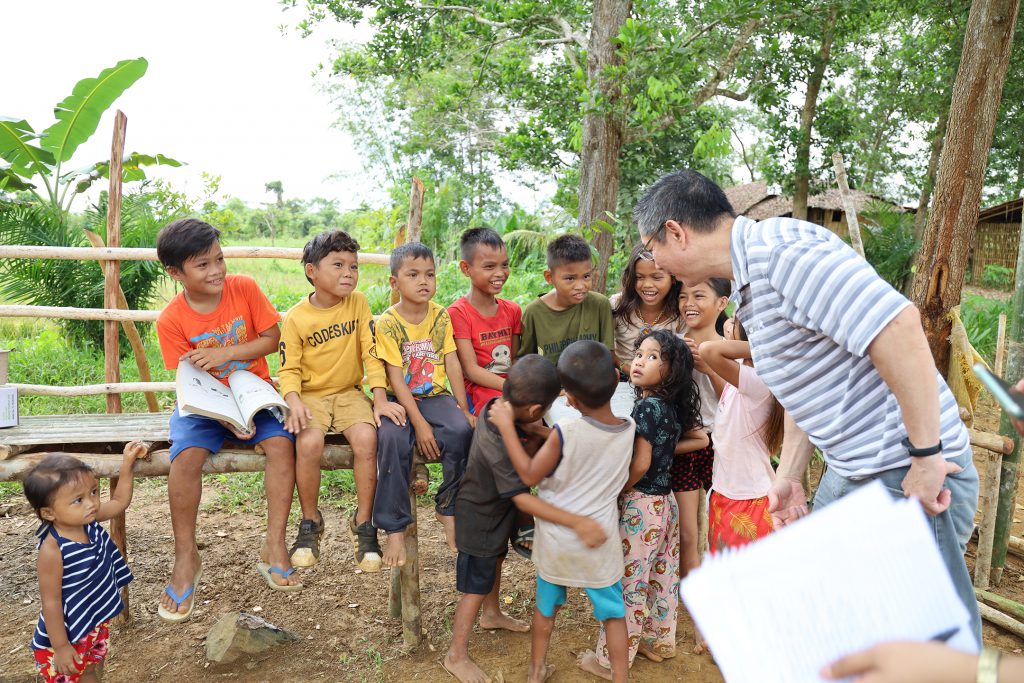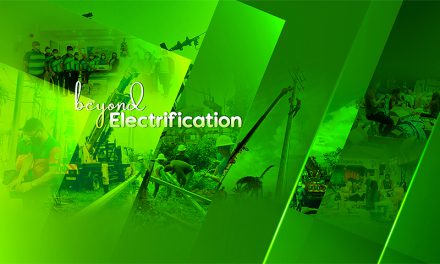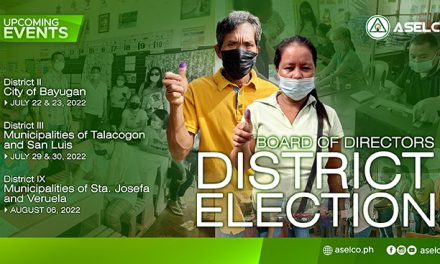INTO THE LIGHT: INSURGENT NO MORE
Approximately 15 kilometers away from the Pan-Philippine Highway, beyond an expanse of palm oil plantations, and surrounded by marshlands known by the residents as “huyonghuyong”, therein lies a piece of red land that is now home to the Umayamnon Tribe.
The Umayamnons have a long history of moving from one place to another due to harsh realities and becoming part of the insurgent group, the New People’s Army (NPA). After decades of struggle, they finally laid down their arms and was resettled to start afresh in Agusan del Sur. The years that come after are times of rebuilding and creating a safe haven for themselves and their young ones. Their history is as vibrant as the color of the earth they walk on and their future as brilliant as the dynamic flickers of the aurora borealis.
Datu Sumusunod: A Community Comes Alive
In the fateful year of 2007, 29 heavily armed families of Umayamnon Tribe surrendered to the Monkayo Camp of the Armed Forces of the Philippines. They were greeted by no less than then President of the Philippines, Gloria Macapagal Arroyo and then Mayor of Davao, Rodrigo Roa Duterte.

With the help of the Office of the Presidential Adviser on the Peace Process and the efforts of the Government of Agusan del Sur, led by the late peacemaker Josefina Bajade, the surrenderers were resettled in the humble village of Purok 8, New Visayas in the Municipality of San Francisco on September 15, 2007. Out of gratitude, Datu Sumusunod, the leader of the tribe, have since then helped in the peace negotiations and encouraging other rebels to surrender.
The people of Umayam have finally found a place to live but it is not without challenges. The soft, wet earth surrounding the village is not fit for cultivation due to its acidity brought about by decomposing vegetation and the swampy nature of the land. To earn money and survive, they have to travel for miles to take on jobs such as construction and security.
Because of the terrain difficulties and the lack of livelihood in the area, the tribal leader could not help but notice that there was a certain spark missing in his tribe. He fears unrest in his fellow Umayamnon as many have no livelihood to pour their daily lives into. He worries that the young ones would grow up without knowing much about the world and not accessing the opportunities that would be available have they been exposed to completely different circumstances. He feared life would be just the same as it once was in the mountains.
After asking for assistance of their current plight, the village became part of the beneficiaries of the Sitio Electrification Program (SEP) of the National Electrification Administration (NEA) implemented in partnership with ASELCO and the Provincial Government of Agusan Sur. After a decade and a half since they came to New Visayas, light finally came and 30 households were officially energized last February 23, 2022.
They could now have their meals long after the sun has set, their kids can play, study, and do their modules at night, they can finally watch television and learn about the things currently happening in the world…Suddenly, a new wave of possibilities have made the community finally come alive.
For Datu Sumusunod, electricity is an instrument to do good. With electricity, nothing is impossible and out of reach even for the poorest of the poor.
Datu Langkuban: Creating a Culture of Peace and Light
Datu Langkuban, Datu Sumusunod’s brother and a local trader of rice and salt, shared the wonderful culture that they have built throughout the years. They called their place “Kalinisan” because they have committed to maintain the cleanliness of the land bestowed to them. True enough, there is no sign of plastic and litter aside from fallen leaves and twigs in the area.
Out of fear of being involved in another cycle of violence and their families being caught in the crossfire, they avoided gossiping and drinking liquor without restraint. There is no hint of greed as they would often forgo their own chances for profit. What the Datu owns, everyone can use. If a neighbor has nothing to eat, they would share what they have. The Umayamnons have tirelessly practiced the commandment “Love thy neighbor as you love thy self” as the foundation of their new community.
Back in the mountains, they would often meticulously look for shiny, regular-sized rocks, scrubbed off of dirt until well cleaned then boiled with lemon grass found along the way to fend for themselves. Life was indeed hard. Today, however, though still faced with uncertainties there is an increasing appreciation of the value and potential of livelihood opportunities. The spark of light they now enjoy has helped them keep their promise to always maintain the cleanliness and peace of their surroundings reflective of their untainted newer selves.
There is a growing consciousness among themselves that the violence and suffering they have previously experienced have contributed to their acquired resilience and unique culture. Although were forced to assimilate into the different customs and cultures they have come across with, they did not lose their identity but gained self-determination.
Dormey Man-anohog: A Pessimist’s Journey to Hope
Dormey Man-anohog was among the very first settlers of Purok 8, New Visayas. Every day and before the night come, he would go to the forest to collect bioluminescent tree sap or pick fallen palm oil fruits to be used as gas alternatives to light their lamps. He would try to plant gabi, cassava and tend to a small rice field.
Because of the lack of support to sustain growing of crops in acidic peat, Dormey was prepared to go back to the mountains. Although life in the mountains is hard, he could easily forage wild food crops and grow rice without much effort since the land is fertile. He doesn’t have the training and the tools that his Ilonggo neighbors have in cultivating food in a wetland.
He stopped believing a long time ago that the projects of the government would reach even a remote barangay like New Visayas. To him, a place could not be called a home if there is no hope for progress and the place he now lives in is still a foreign land with which he would soon leave. That is why he felt dubious at first when Datu Sumusunod announced that their village was chosen to become a beneficiary of the Sitio Electrification Program and when his house was finally energized, he was in for a complete overhaul of perspective.
Sometimes, what a person needs is a pillar that would enable him to be stable and take root. For Dormey, it is the access to electricity that defeated his cynicism. He finally felt the zeal of the Government that wishes to provide better living conditions for their tribe and in return, he felt the desire to try even harder. Dormey now intends to fortify his home where his family can live for the decades to come and in true Umayamnon fashion, plans to share the light and the bright days ahead with a smile.
…
Once displaced by the difficulties of living conditions and the war that comes with it, the humble tribe of Umayam finally have the chance to deepen their roots in Barangay New Visayas. The advent of electricity provides fertile ground for these people to achieve social and economic inclusivity; the necessary energy to achieve health and food security, access to education, eradicate poverty and maintain peace. These stories remind us once again that the role of the National Electrification Administration together with the Electric Cooperatives of the Philippines goes beyond building electrical structures in the countryside. Beyond rural electrification, we help our governments build communities and create spaces that people can call their home.

After a long day of honest work, Umayamnons can finally rest their backs watching their kids read and play until dusk. There are no rifles heard but only cicadas humming along the gentle glow of the light bulb…At long last, they can finally dare to dream.



